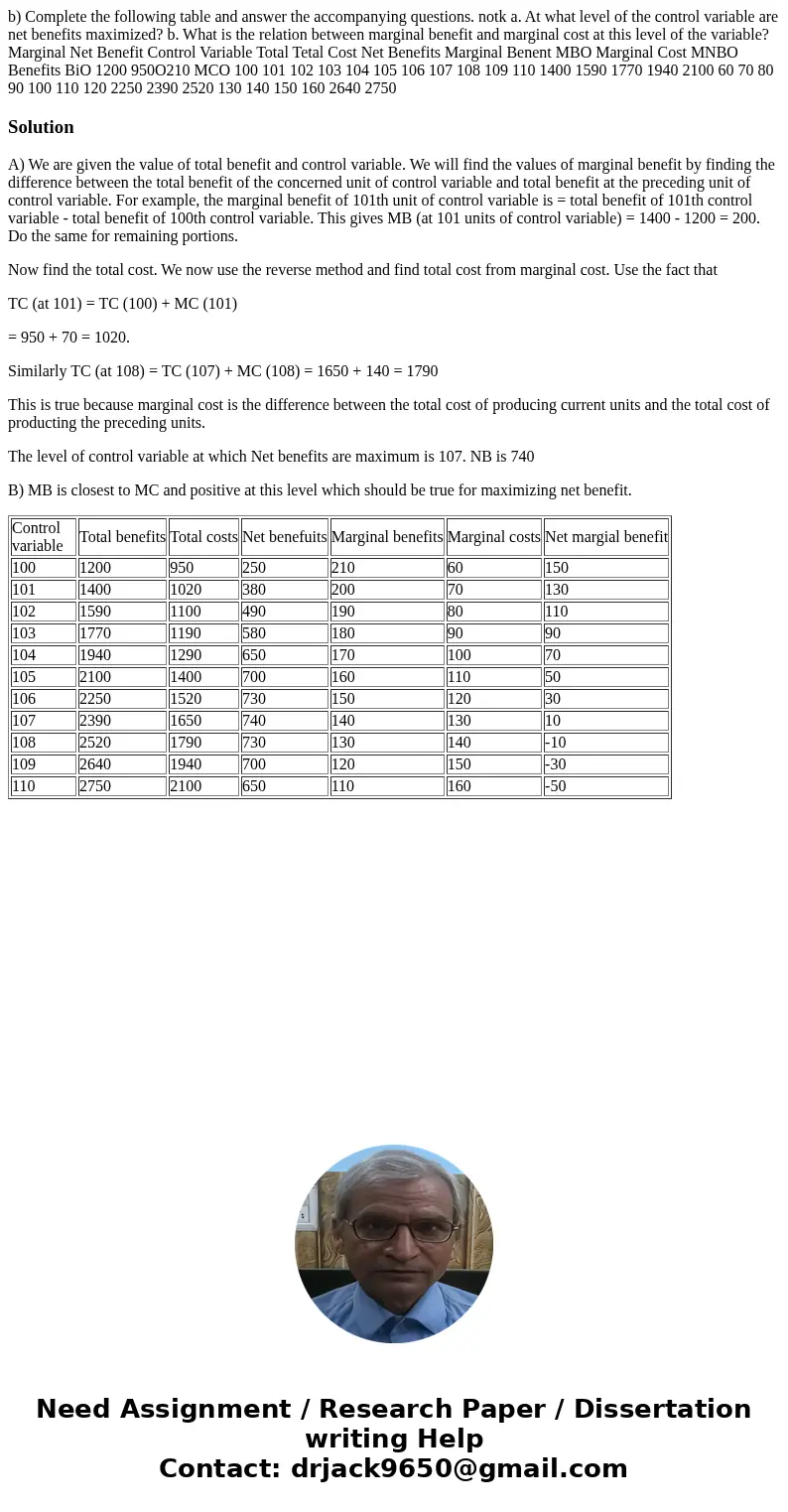b Complete the following table and answer the accompanying q
Solution
A) We are given the value of total benefit and control variable. We will find the values of marginal benefit by finding the difference between the total benefit of the concerned unit of control variable and total benefit at the preceding unit of control variable. For example, the marginal benefit of 101th unit of control variable is = total benefit of 101th control variable - total benefit of 100th control variable. This gives MB (at 101 units of control variable) = 1400 - 1200 = 200. Do the same for remaining portions.
Now find the total cost. We now use the reverse method and find total cost from marginal cost. Use the fact that
TC (at 101) = TC (100) + MC (101)
= 950 + 70 = 1020.
Similarly TC (at 108) = TC (107) + MC (108) = 1650 + 140 = 1790
This is true because marginal cost is the difference between the total cost of producing current units and the total cost of producting the preceding units.
The level of control variable at which Net benefits are maximum is 107. NB is 740
B) MB is closest to MC and positive at this level which should be true for maximizing net benefit.
| Control variable | Total benefits | Total costs | Net benefuits | Marginal benefits | Marginal costs | Net margial benefit |
| 100 | 1200 | 950 | 250 | 210 | 60 | 150 |
| 101 | 1400 | 1020 | 380 | 200 | 70 | 130 |
| 102 | 1590 | 1100 | 490 | 190 | 80 | 110 |
| 103 | 1770 | 1190 | 580 | 180 | 90 | 90 |
| 104 | 1940 | 1290 | 650 | 170 | 100 | 70 |
| 105 | 2100 | 1400 | 700 | 160 | 110 | 50 |
| 106 | 2250 | 1520 | 730 | 150 | 120 | 30 |
| 107 | 2390 | 1650 | 740 | 140 | 130 | 10 |
| 108 | 2520 | 1790 | 730 | 130 | 140 | -10 |
| 109 | 2640 | 1940 | 700 | 120 | 150 | -30 |
| 110 | 2750 | 2100 | 650 | 110 | 160 | -50 |

 Homework Sourse
Homework Sourse